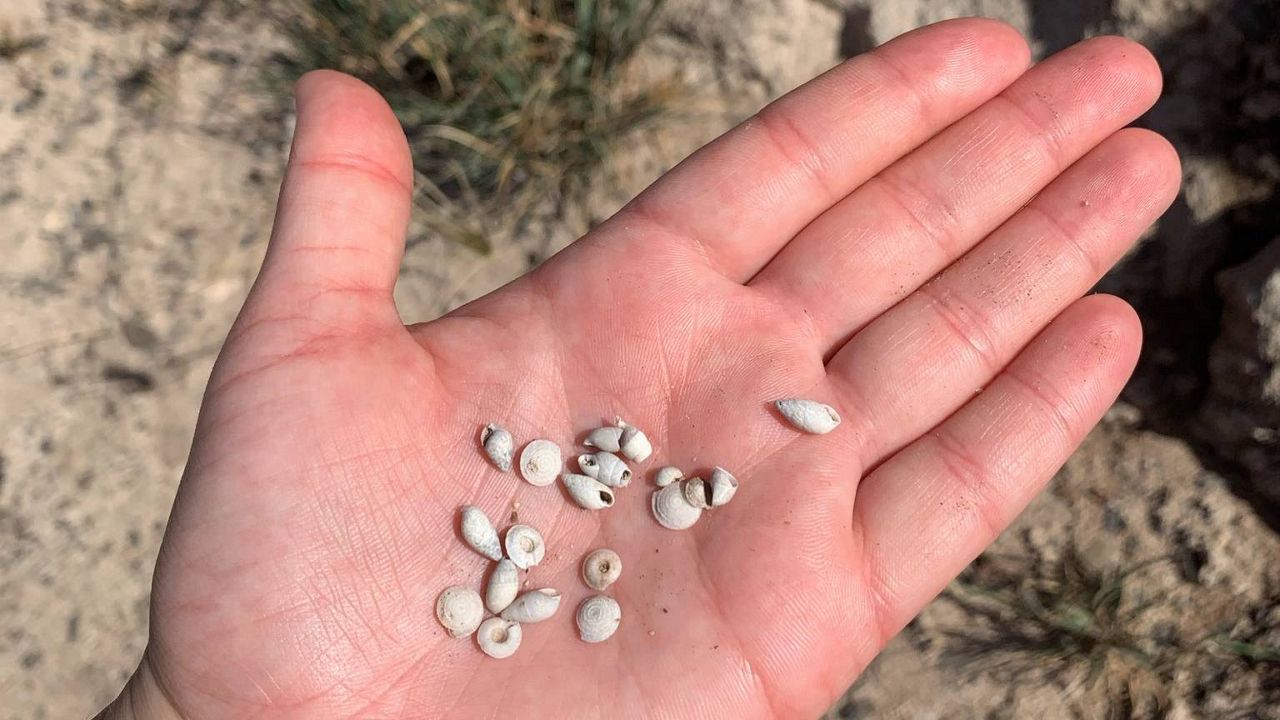HONOLULU — A Hawaii Pacific University student is studying endemic snails that went extinct thousands of years ago in order to learn how Hawaii’s environment has changed.
Samantha Arsenault, a Hawaii Pacific University Masters of Science student, is studying several families of endemic land snails that went extinct thousands of years ago.
The extinct snails once lived at Kaena Point, a dry and barren part of West Oahu — but similar snails that still survive today only live in Hawaii’s wet native forests. Curious how the extinct snails might have once survived at Kaena Point, Arsenault is focusing her research on determining whether tens of thousands of years ago this area of Oahu was a cool and wet forest, which would have made it an ideal environment for land snails.
A major climate shift happened between 115,000 to 12,000 years ago as Earth moved through the Last Glacial Period, commonly known as the last Ice Age. During this period, the Earth’s climate slowly became warmer and drier.
“We know that the Earth underwent a period of pretty dramatic, natural climate change at the end of the Last Glacial Period,” said Arsenault in an interview Monday with Spectrum News Hawaii.
While research has looked at the climate shifts of the Last Glacial Period, how it impacted the Central Pacific and Hawaiian Islands has not been studied in detail, according to Arsenault.
“We would like to look into what this period of natural climate change looked like in the Hawaiian Islands,” said Arsenault.
While her study focuses on Kaena Point, she said the findings will be broadly applicable.
The snails being studied are only the size of a pencil eraser, and people can still find tens of thousands of their bleached shells along the coast of Kaena Point. Arsenault, who described the snails as “cute,” is studying four species, including the Pleuropoma laciniosa. The other three snail species have not yet been described, but they also once lived at Kaena Point. Arsenault and her thesis adviser, Dr. Brenden Holland, a biology professor at HPU, received permits from the Department of Parks and Natural Resources in order to collect the shells at Kaena Point.
Arsenault will send at least 32 of the collected shells to labs in California and Australia for carbon dating. This will help determine how long ago the snails were alive. Through isotopic analysis, the carbon dating will also be used to see how much precipitation and what type of vegetation was dominant in the area at the time the snails were alive.
Preliminary data show the shells from Kaena Point are from 40,000 to 30,000 years ago. By dating more of the snail shells, Arsenault can create a timeline of them over at least ten thousand years and see how the climate changed at Kaena Point during this period.
The hope is that learning exactly how the climate evolved when these prehistoric endemic snails were alive will help prevent the extinction of endemic snails that live in Hawaii’s forests now.
“This can give us a predictive model for what to expect,” said Holland, about how modern-day climate change might impact Hawaii’s forests and snails.
“Unfortunately, the largest threats that endemic Hawaiian snails face today are due to anthropogenic influence — that’s human activity,” said Arsenault.
She listed climate change, over-harvesting snails for their beautiful shells, deforestation and the release of invasive animals in Hawaii as the principal causes of what is now threatening snails.
There were once 800 species of snails in Hawaii, and now there are only about 300 that still exist. Holland said in the 22 years that he has been living in Hawaii, three snail species have already gone extinct.
With the research being done by Arsenault, resource managers will be able to make predictions about when the wet forest will become too hot or dry to be a suitable environment for snails and other native species, allowing time for a conservation plan to be put into action.
“We don’t want to see a repeat of what happened at Kaena Point. We need to keep these forests in a state where the snails can not only survive, but thrive,” said Arsenault. “I really think that this study can help resource managers better manage these forests and make sure that the snails are doing alright.”
